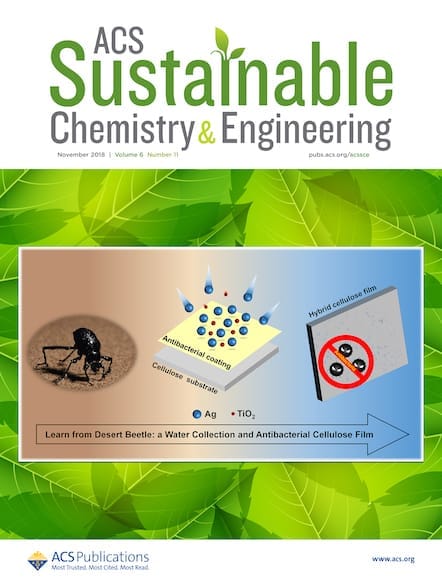This innovative, stretchy hydrogel presents a promising option for conserving waterlogged wooden artifacts while minimizing environmental impact.

The Global Foundation for Ocean Exploration estimates there are over 3 million shipwrecks worldwide, and that only 1% have been explored.1 The study of underwater shipwrecks has important archaeological value, and their preservation offers up unique challenges. Currently, the two main methods for waterlogged wood restoration are direct and replacement drying. Direct drying removes the water from the wood while trying to minimize shrinkage due to dehydration—generally retaining the structure, but resulting in weakened samples. Replacement drying instead uses consolidants such as polyethylene glycol to reinforce waterlogged wood. Both methods take several years to accomplish. An extremely famous example of this is the Mary Rose, a warship belonging to King Henry VIII of England, which sank in the English Channel in 1545. The ship was lifted in the 1980s and underwent decades of conservation, including being sprayed with 40,000 liters of polyethylene glycol each day for almost 10 years!2
But producing polyethylene glycol is not a sustainable approach, requiring byproducts from petroleum refining or directly from natural gas or coal. As an alternative, scientists have been exploring biomass-based hydrogels, which present a versatile option for conserving waterlogged wooden artifacts while minimizing environmental impact. However, any new methods would need to address two additional challenges in the preservation of waterlogged archaeological wood: weakened sample structure and long-term bacterial erosion.
Now, a team in China have recently reported in ACS Sustainable Chemistry & Engineering on a self-dissolving hydrogel with antibacterial and deacidifying effects.3 To do this, they embedded silver nanoparticles in an alginate/polyacrylamide hydrogel. Then, they tested the resulting hydrogel on waterlogged archaeological wood from Nanhai One, an 800-year-old shipwreck from the South China Sea. The hydrogel's self-dissolving characteristics were shown to avoid damaging the wood upon removal. Additionally, the embedded silver nanoparticles demonstrated an impressive preservation effect on wooden relics in terms of solubility and flexibility, being able to stretch 20 times their original length. The hydrogel also demonstrated a 99% reduction in bacterial presence, effectively neutralizing the acid generated by bacterial metabolism. The authors are hopeful that the new hydrogel will offer a solution that supports both sustainable chemistry practices and cultural heritage preservation worldwide.
Further Explorations: Hydrogels
This new study represents just one of a number of potential uses for hydrogels, underscoring the crucial need to produce them sustainably. Moisture-retaining, self-recoverable, and bioadhesive hydrogels have been shown to accelerate wound healing.4 The technology also has potential application in wearable sensors, implants, drug-delivery systems, and tissue design platforms, where the combination of inorganic nanospecies such as silver nanoparticles and soft three-dimensional hydrogel networks can deliver in materials with enhanced performance and new properties.5,6
Submit Your Own Hydrogel Research
To further showcase the cutting-edge research in this field, Chem & Bio Engineering is launching a Special Issue on Advanced Functional Hydrogels—seeking to capture the breadth of research, from fundamental advances to practical applications. Articles, Letters, Reviews, Perspectives, Viewpoints, and Commentaries on all topics related to hydrogels are invited.
Click here for more information, and submit your work by September 30, 2025 for a chance to be part of this exciting new collection!
References
- How Many Shipwrecks Are There? Global Foundation for Ocean Exploration (GFOE) 2025. https://www.engineeringfordiscovery.org/.
- Conservation of the ship. The Mary Rose Trust 2025. https://maryrose.org/.
- Chen, J. et al. Alginate–Nanosilver Hydrogels: A Self-Dissolving System for Comprehensive Preservation of Waterlogged Wooden Artifacts. ACS Sustainable Chem. Eng. 2024, 12, 43, 16091–16103.
- Li, J. et al. Moist-Retaining, Self-Recoverable, Bioadhesive, and Transparent in Situ Forming Hydrogels To Accelerate Wound Healing. ACS Appl. Mater. Interfaces 2020, 12, 2, 2023–2038.
- Jia, L. et al. Degradable and Recyclable Hydrogels for Sustainable Bioelectronics. ACS Appl. Mater. Interfaces 2024, 16, 26, 32887–32905.
- Garcia-Astrain, G. et al. Biocompatible Hydrogel Nanocomposite with Covalently Embedded Silver Nanoparticles. Biomacromolecules 2015, 16, 4, 1301–1310.
